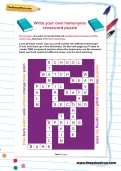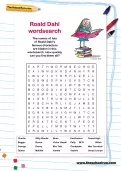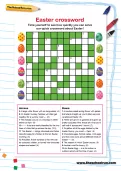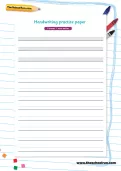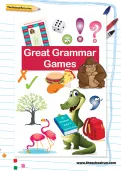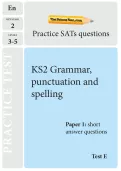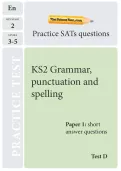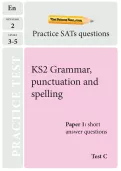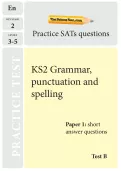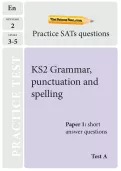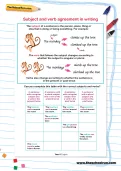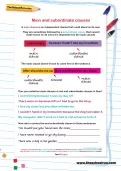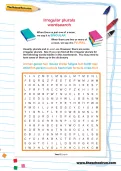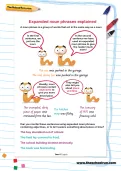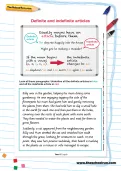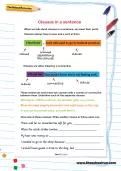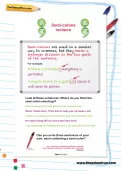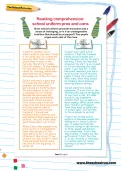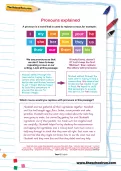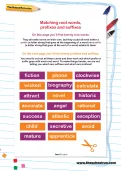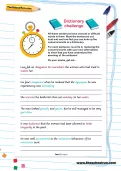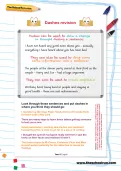Help your child form letters at the correct relative size and place them correctly on the 'base' writing line with our free printable handwriting practice sheets. Two formats with guidelines are included, one for beginner writers and one to help children improve their handwriting skills.
or
Register to add to your saved resources
From proper nouns to pronouns, statements to subordinate clauses and articles to adverbs, help your child revise grammar the fun way with our Great Grammar Games learning pack. A friendly, grammar- and flamingo-obsessed Grammar Gator offers tips, tricks, exercises and activities to help your child practise all aspects of basic English grammar in play-packed sessions.
or
Register to add to your saved resources
Already a subscriber? to view this content.
Practise the grammar, punctuation and spelling skills required for the KS2 SATs test with your child with our 'mock' papers. Written in the style of the KS2 Grammar, punctuation and spelling test, the practice papers offer at-home revision opportunities for children taking the Y6 tests in May.
or
Register to add to your saved resources
Already a subscriber? to view this content.
Help your child revise for the new 'SPAG' test, which tests grammar, punctuation and spelling as part of KS2 SATs. Our 'mock' papers will help familiarise them with the question format and boost their confidence with some at-home practice.
or
Register to add to your saved resources
Already a subscriber? to view this content.
Written in the style of the new KS2 SATs Grammar, punctuation and spelling test, our 'SPAG' practice papers will offer your child the chance to get to grips with the question format and practise in preparation for the Y6 tests in May.
or
Register to add to your saved resources
Already a subscriber? to view this content.
Adverbs, clauses, correct punctuation and sentence analysis are all part of the new KS2 SATs Grammar, punctuation and spelling test. Help your child revise in preparation for the May assessments with our practice papers, written in the style of the 'SPAG' test.
or
Register to add to your saved resources
Already a subscriber? to view this content.
A new statutory test of English grammar, punctuation and spelling was introduced for children at the end of Key Stage 2 from 2013. Help your Y6 child prepare for the 'SPAG' test with our practice papers, written in the style of the new test by a KS2 teacher.
or
Register to add to your saved resources
Already a subscriber? to view this content.
Homonyms are pairs of words that are spelled and pronounced the same way, but have different meanings. Look at these words. Can you work out the two different meanings?
If not, look them up in the dictionary. On the next page you’ll need to create TWO crossword puzzles where the homonyms are the answers. Each word will need two different clues, one for each meaning.
or
Register to add to your saved resources
The subject of a sentence is the person, place, thing or idea that is doing or being something. The verb that follows the subject changes according to whether the subject is singular or plural. Verbs also change according to whether the sentence is in the present or past tense. Can you complete this table with the correct subjects and verbs?
or
Register to add to your saved resources
A KS2 English worksheet created by an experienced teacher to help your child identify main and subordinate clauses. Includes examples and answers.
or
Register to add to your saved resources
Already a subscriber? to view this content.
See if you can find all the irregular plural nouns for the following words hidden in this teacher-created wordsearch. You may need to look some of them up in the dictionary.
or
Register to add to your saved resources
A noun phrase is a group of words that act in the same way as a noun. Can you rewrite these sentences using expanded noun phrases containing adjectives, or to tell readers something about place or time? Then rewrite these sentences using expanded noun phrases that use superlatives, or that mention a person.
or
Register to add to your saved resources
Already a subscriber? to view this content.
Usually nouns have an article before them. Look at these paragraphs. Underline all the definite articles in blue and all the indefinite articles in red.
or
Register to add to your saved resources
Already a subscriber? to view this content.
When we talk about clauses in a sentence, we mean their parts. Clauses always have a noun and a verb in them and are often linked by a connective. These sentences each have two clauses with a comma or connective between them. Underline each of the separate clauses.
or
Register to add to your saved resources
Semi-colons are used in a similar way to commas, but they mark a stronger division. Look at these sentences. Where do you think the semi-colon should go?
or
Register to add to your saved resources
Already a subscriber? to view this content.
Does school uniform promote discipline and a sense of belonging, or is it an unimaginative tradition that should be scrapped? Two pupils argue each side of the case. Read their arguments then answer the questions.
or
Register to add to your saved resources
Already a subscriber? to view this content.
This free Year 6 English worksheet was created by a primary-school teacher and explains in easy-to-understand language what pronouns are, providing helpful examples and a fun activity at the end!
or
Register to add to your saved resources
A Year 6 English worksheet created by a primary school teacher to help your child understand prefixes and suffixes, and practise matching root words.
or
Register to add to your saved resources
Already a subscriber? to view this content.
All these sentences have unusual or difficult words in them. Read the sentences out loud and see how fast you can look up the coloured words in a dictionary. For each sentence, re-write it, replacing the coloured words with your own alternatives to show that you have understood the meaning of the sentence. On your marks, get set...
or
Register to add to your saved resources
Already a subscriber? to view this content.
Dashes can be used to show a change in thought during a sentence. They can also be used to drop some extra information into a sentence or they can also be used to create emphasis. Look through these sentences and put dashes in where you think they should go.
or
Register to add to your saved resources
Already a subscriber? to view this content.
